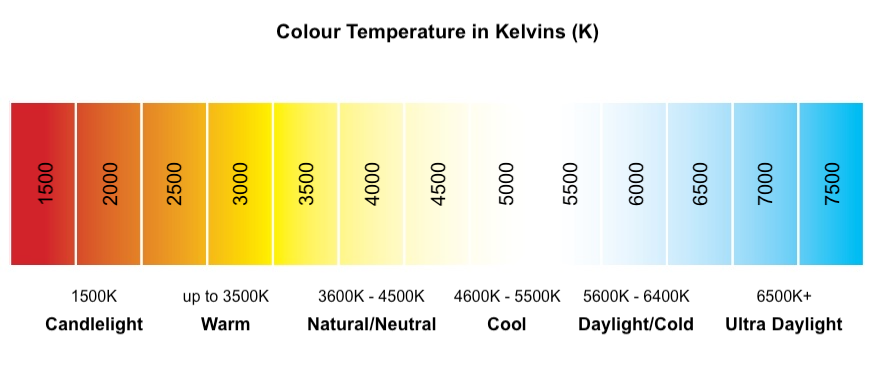Welcome to the first of my semi-technical information blogs. The aim here is to help you get a good grasp and understanding of the terminology used with the technology on this site.
Today we are starting with a big one as, without this information, you will struggle to compare different light outputs and understand fully what a 'warm' LED is when compared to a 'cool' LED.
So, let's not waste any more time and start with understanding what a Lumen (lm) is.
Lumens (lm)
A Lumen is a measurement of what a light unit emits. It is a measure of the amount of visible light coming from your light source. The higher the Lumens number the brighter the light; it’s that simple.
The old way, indicating how much light was given off, was derived from the power the bulb required to work in Watts (W). For example, you know roughly what a standard filamented 60W light bulb would emit compared to a standard 100W light bulb.
Both examples can now be measured in Lumens (the light output) instead of the energy used. The 60W bulb would give around 700 Lumens and the 100W bulb would give 1200 Lumens.
As you can see, this is a much more accurate way of determining light brightness, as it measures the light output, and not simply the energy required to power the light (in Watts).
LED lights use a fraction of the energy used by standard filament bulbs, so to accurately compare light output between the two different technologies, we need to measure each using Lumens.
Here are some simple examples:
- 3W LED = 250+ Lumens, equivalent to a 25W standard filamented light bulb
- 5W LED = 450+ Lumens, equivalent to a 40W standard filamented light bulb
- 5W LED = 450+ Lumens, equivalent to a 40W standard filamented light bulb
- 20W LED = 1500+ Lumens, equivalent to a 110W standard filamented light bulb
Beware! Not All LEDs are equal!
You could get two 5W LED bulbs, from different suppliers, that will have varying Lumens outputs. For example, one supplier's LED would output 400 Lumens and the other 500+ Lumens but both bulbs would use only 5W of power.
So, you need to make sure to look at the Lumens output to fully understand the level of light output you will get from LED lighting.

Kelvins (K)
The colour temperature of an LED can make a huge difference to the 'ambience' that the light gives off and can completely change the way a room or outside space feels once lit.
Colour temperature is measured in a unit called Kelvins (K). The lower the number of Kelvins, the warmer (more yellows and reds) the light output will be. A single flame from a candle outputs light at around 1800K and gives the feeling of warmth.
Generally, you should be looking for a Kelvin value of 2000K to 3500K if you are looking for a warm light output for around the home and garden. This end of the Kelvin scale is ideal for areas in which you would want to relax, for example bedrooms and living rooms.
However, if you want a light source to work under, you need to look at the upper end of the Kelvin scale, starting at around 4000K. When looking at this light it will seem clearer and have more of a cool blue tinge to it. This would be ideal for the kitchen in a home, for example.
Once you get to 6500K and higher you are looking at artificial daylight bulbs that give the appearance of daylight; ideal in a workshop or even a professional kitchen but perhaps a little harsh for everyday use around the home.
Below is a simple graph showing the range from 1500K to 7500K:

As always, I hope this has been an informative read and has made the understanding of Lumens and Kelvins a little easier. If you have any questions on any of this in regards to the SolarGo2 solar lighting range, please contact us and we will endeavour to help you out.
Sean
